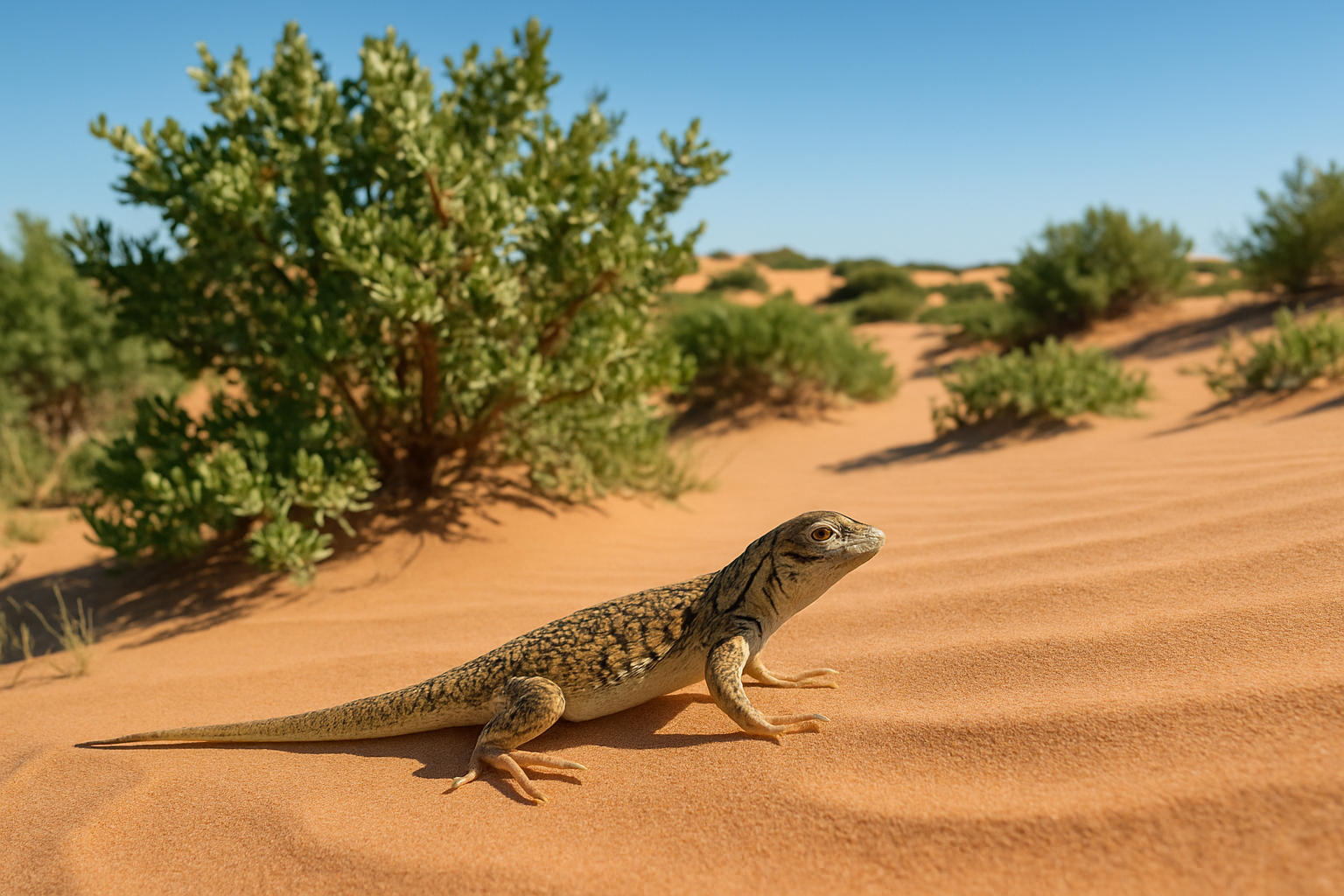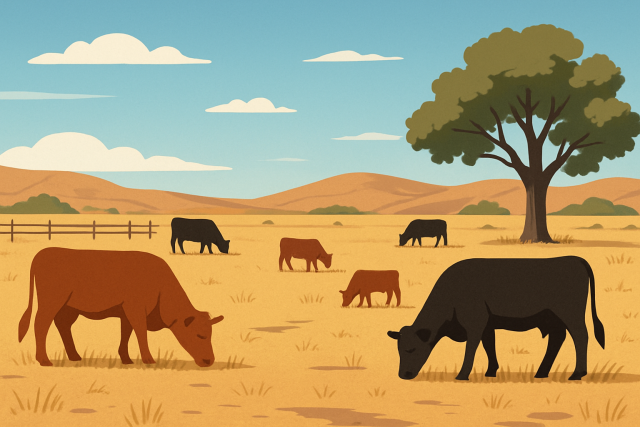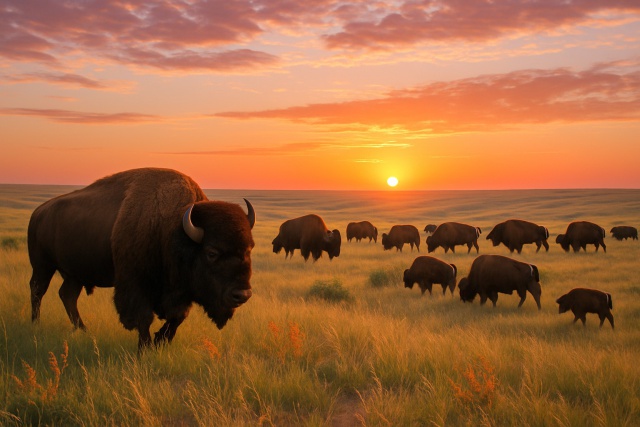Why Dunes Sagebrush Lizard Protection Matters Now?

The dunes sagebrush lizard is a tiny desert dweller native to the sunbaked expanses of the American Southwest. It once thrived across vast stretches of sagebrush dunes and made those sandy hills its home sweet home. Unfortunately, habitat loss and human footprints combined with shifting environmental tides have caused its numbers to take a serious hit. It now teeters on the edge of extinction. Protecting this little guy means much more than saving one reptile. It is a promise to safeguard a fragile ecosystem that plays a big role in biodiversity and the health of the environment.
A Closer Look at the Dunes Sagebrush Lizard, a Desert Dynamo
The dunes sagebrush lizard (Sceloporus arenicolus) is a small, nimble little reptile that calls the distinctive sand dune and shinnery oak shrublands of New Mexico and Texas its home. It is developed some pretty clever adaptations to not just survive but actually thrive in this tough, ever-shifting landscape.
- Has a distinctive sandy hue that helps it disappear into the ever-shifting dunes.
- Mainly chows down on insects like ants and beetles, keeping its diet crunchy and satisfying.
- Prefers spots with loose sand or shinnery oak plants essential for its burrowing and cozy shelter.
- Displays territorial and mating behaviors from spring through summer. Females typically lay small clutches of eggs—motherhood in modest doses.
- Plays a quiet but important role in the ecosystem by keeping insect populations in check and serving as a tasty snack for predators like birds.
- Found exclusively in southeastern New Mexico and nearby parts of Texas, underscoring how limited and special its range is.
Why the Dunes Sagebrush Ecosystem Matters More Than You Might Think
The dunes sagebrush ecosystem is a one-of-a-kind desert landscape featuring sandy soils and gently rolling dunes. Thick stands of shinnery oak seem to hold their ground against the odds. This biome is home to a variety of specialized plants and animals that have finely tuned themselves to survive and even thrive in these tough conditions.
In this delicate ecosystem the dunes sagebrush lizard plays a vital role. Its presence helps keep pesky insect populations in check and supports the balance of the food web. If the lizard vanished predator-prey relationships might get out of whack. Some insect populations could spiral out of control and a domino effect of harmful environmental consequences could unfold.
What’s Putting This Little Guy in Jeopardy
The dunes sagebrush lizard is up against quite a few hurdles both from human activities and Mother Nature’s mood swings. Its home turf is getting chopped up and worn down by everything from energy projects and spreading cities to pesky invasive species.
- Oil and gas extraction stirs up trouble by disturbing sand dunes and releasing pollutants that harm lizard populations.
- Habitat fragmentation from roads, pipelines and development isolates lizard groups and reduces their genetic diversity.
- Off-road vehicles tempt some but speed up dune erosion and destroy vital burrowing spots.
- Rising droughts and higher temperatures stress these lizards, affecting their bodies and reducing their food options.
- Invasive plants and animals compete with native species and change vegetation and prey availability.

The dunes sagebrush lizard blending with its sandy dune environment amid shinnery oak shrubland.
Legal Protection Measures Explained and Their Importance
The dunes sagebrush lizard is listed as a threatened species under the U.S. Endangered Species Act which really shines a spotlight on just how vulnerable this little creature is
These protections steer land use by insisting on environmental assessments before any development takes place. They put the brakes on harmful activities in delicate habitats and mandate recovery plans that focus on habitat restoration and ongoing monitoring.
| Jurisdiction | Protection Status | Protection Date | Enforcement Mechanisms | Impact on Local Policies |
|---|---|---|---|---|
| Federal (USA) | Threatened species | 2014 | ESA permits and habitat consultations | Puts the brakes on certain developments and calls for careful impact studies |
| New Mexico State | Species of concern | 2012 | State wildlife regulations and conservation grants | Acts as a backbone for habitat protection and helps steer state land use decisions |
| Texas State | Candidate species | Pending | Monitoring efforts and voluntary guidelines | Promotes voluntary conservation and nudges up public awareness |
| Local Counties | Varies by region | N/A | Zoning rules and development reviews | Tosses in some limits on land changes near dunes, depending on where you are |
Ecological and Economic Perks of Standing Up for the Lizard
Protecting dunes sagebrush lizard populations is more than just a conservation box to tick. It’s vital for keeping the desert soil steady and boosting biodiversity. Their burrowing antics do a quiet but vital job by loosening up the soil and cycling nutrients in a way that benefits many plants and animals.
Protecting the lizard's habitat also gives a nice boost to local economies by encouraging eco-tourism centered around the unique charm of desert landscapes and their fascinating wildlife. Conservation-driven sustainable land management often paves the way for jobs in habitat restoration and environmental monitoring—keeping people busy while doing good.
"Protecting the dunes sagebrush lizard is about much more than just saving one little species. It’s a vivid reminder of how deeply intertwined our ecosystems are—each thread supporting not only wildlife but the very livelihoods people depend on across the Southwest. Taking thoughtful conservation steps now sets the stage for a healthier, tougher environment that future generations can truly thrive in." — Dr. Elena Martinez, Desert Ecologist
Common Misunderstandings About Protecting the Dunes Sagebrush Lizard Let’s Clear Things Up
Some individuals are quick to say that protecting the dunes sagebrush lizard puts a serious brake on economic growth, or that the little critter isn’t worth losing sleep over. But here’s the thing those opinions overlook the bigger picture of how ecosystems are all tangled up together.
- Myth: Protecting the lizard costs local jobs. Reality: Conservation efforts often create new jobs in restoration and monitoring, so it’s a win-win.
- Myth: The dunes sagebrush lizard has little ecological value. Reality: This little guy plays an important role in supporting diverse food webs and holds its own in the ecosystem.
- Myth: Recovery programs are too expensive. Reality: Avoiding damage to habitats usually costs less than dealing with the mess if things get worse.
- Myth: Protecting one species doesn’t affect overall environmental health. Reality: A decline in a single species is like the canary in the coal mine because it signals habitat troubles that affect many organisms.
Ways Individuals and Communities Can Pitch In to Support Conservation Efforts
Anyone can pitch in to help protect the dunes sagebrush lizard by jumping into local efforts and backing policies aimed at preserving their habitat.
- Dive in or lend a hand organizing local habitat cleanup events to scoop up trash and keep the dunes safe from any harm. Every little bit helps and it’s actually pretty rewarding to see the difference your efforts make.
- Keep an eye out and give the authorities a heads-up if you catch any illegal off-road vehicle antics or unauthorized land use because those rough rides can really mess things up.
- Show some love for renewable energy projects that work to lighten their footprint on these delicate desert ecosystems. It’s all about balancing progress with preservation.
- Pass the word along to friends and family about why the dunes sagebrush lizard and its home are worth caring about. It might just spark a little passion in someone else too.
Looking Ahead Challenges and Opportunities That Lie Ahead
Ongoing research is steadily peeling back the layers on how to restore dune sagebrush habitats more effectively and boost population connectivity.
Integrating strategies to adapt to climate change is vital for safeguarding these conservation efforts over the long haul. This means focusing on protecting climate refugia—those spots less prone to drought or extreme temperatures—and boosting habitat corridors so species can move more easily. By modeling what the environment might look like in the future, managers can anticipate threats and craft strategies that give dunes sagebrush lizards a fighting chance in an ever-changing world.
Frequently Asked Questions
Why is the dunes sagebrush lizard considered a keystone species?
The dunes sagebrush lizard plays an important role in keeping insect populations in check and maintaining balance in its ecosystem’s food web. When its numbers plunge, predator-prey relationships can quickly go off the rails. This leads to an overrun of certain insects and causes ripple effects that harm plants and other animals. In short, this little lizard is a big deal for preserving desert biodiversity.
How does protecting the lizard benefit local economies?
Protecting the lizard isn’t just about saving a species — it supports eco-tourism and helps create jobs in habitat restoration. It also prevents costly environmental issues like soil erosion. On top of that, thoughtful land management keeps ecosystems healthy, which benefits ranching and farming communities who rely on natural services. It’s a win-win.
What are the biggest misconceptions about protecting this species?
Many assume conservation efforts hold back economic progress or believe the lizard is ecologically insignificant. The reality is the opposite. Responsible land use can coexist with thriving economies. The lizard’s decline is a warning light signaling broader habitat trouble. Protecting the species also helps generate jobs and avoids expensive environmental damage.
Can individuals really make a difference in conserving the lizard?
Absolutely yes. Whether it’s noticing and reporting habitat damage, supporting renewable energy, or joining community cleanups, every action counts. When enough people spread the word, it pushes policymakers to make important conservation. Small ripples can turn into waves when protecting this species.
How does climate change specifically threaten the dunes sagebrush lizard?
Rising temperatures and worsening droughts put serious strain on the lizard’s survival, shrink its food supply, and degrade its habitat. Creating climate refuges and connecting habitats with corridors isn’t just nice to have — it’s essential for the lizard to adapt fast enough to keep pace with rapid environmental shifts.





